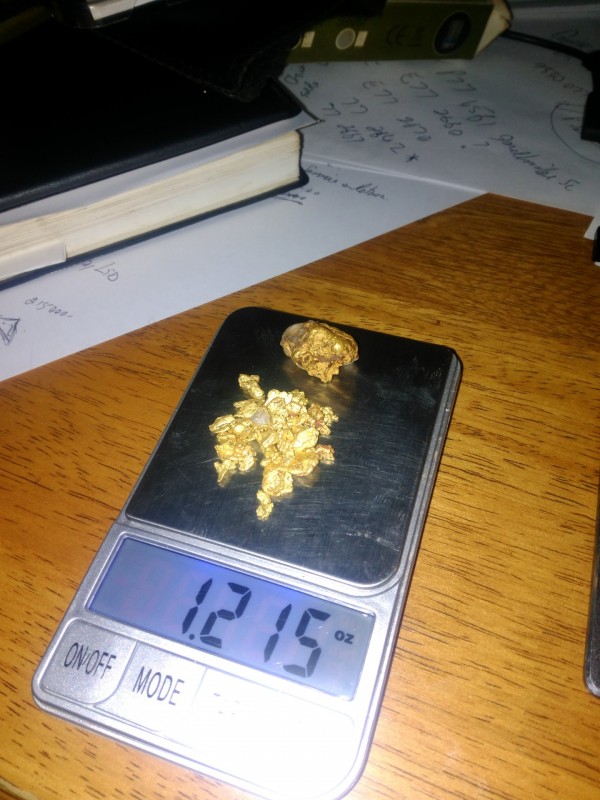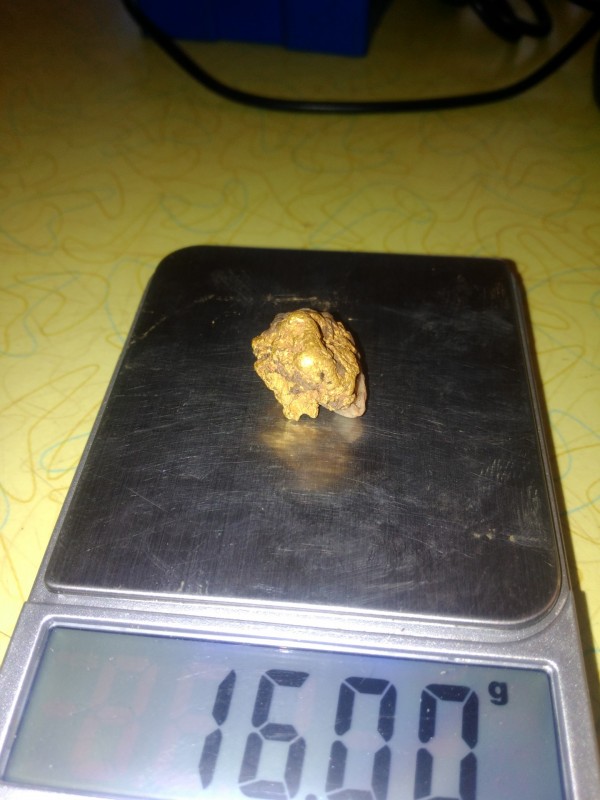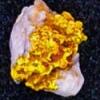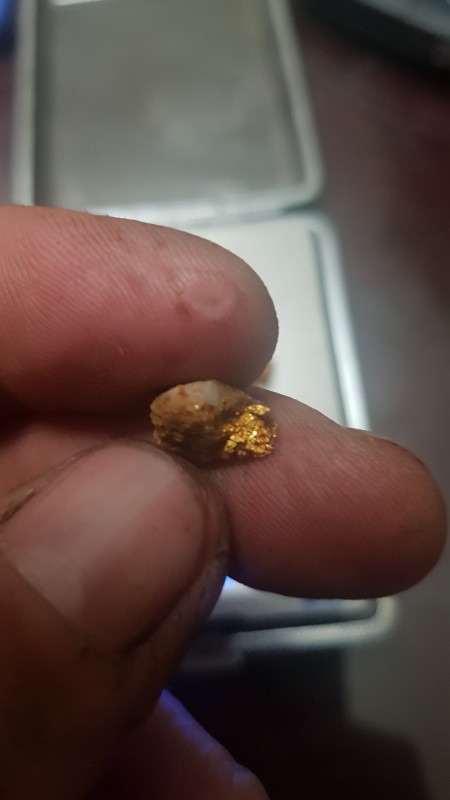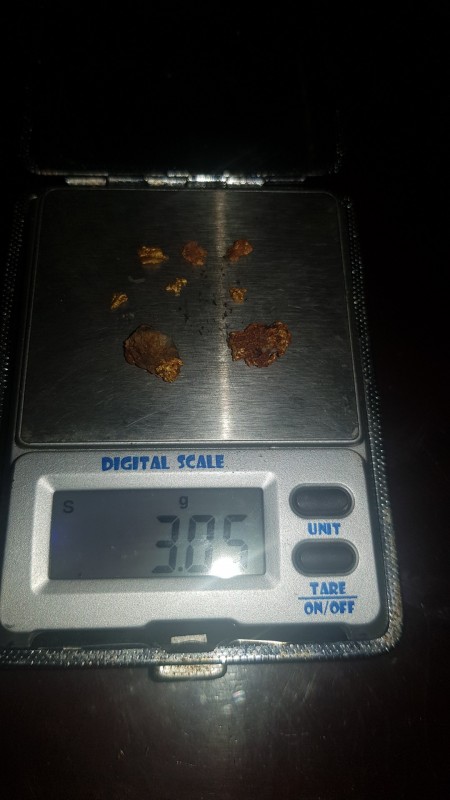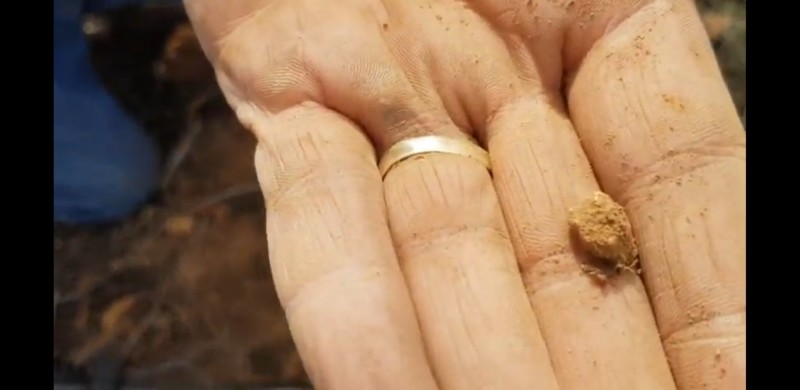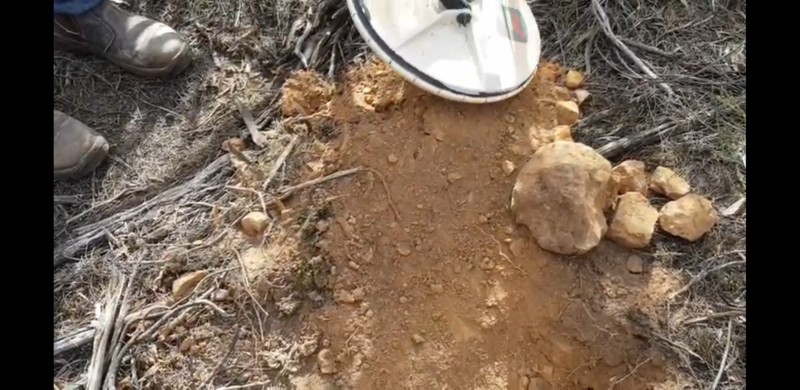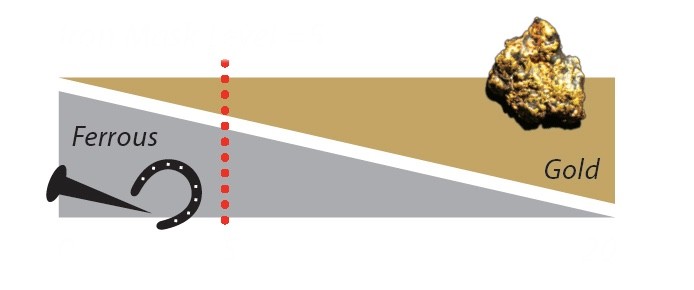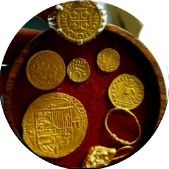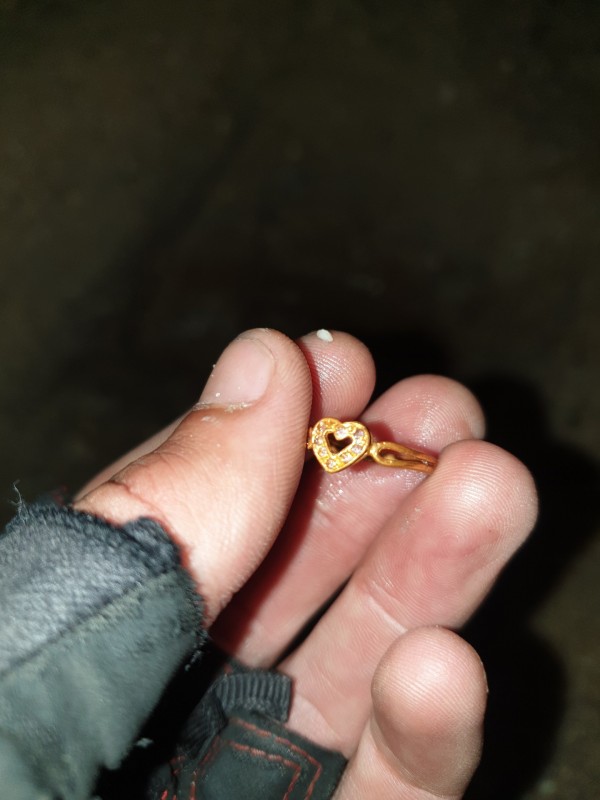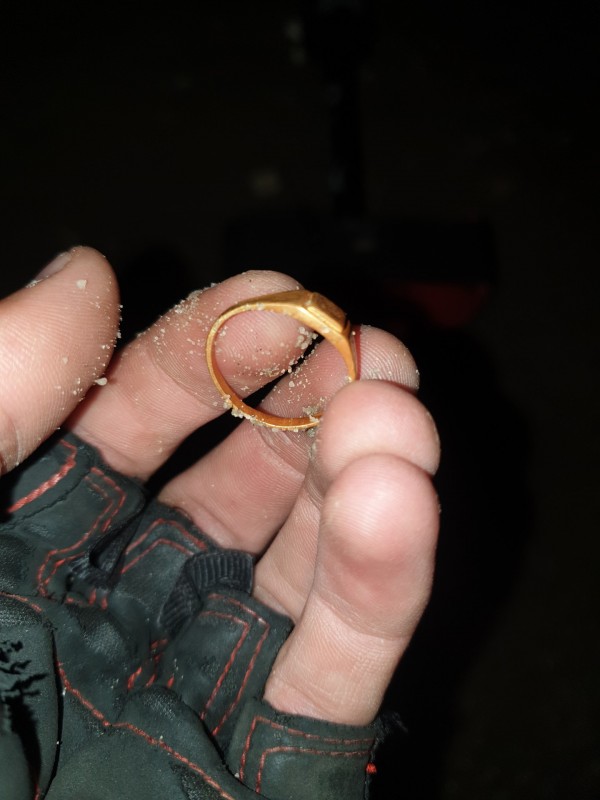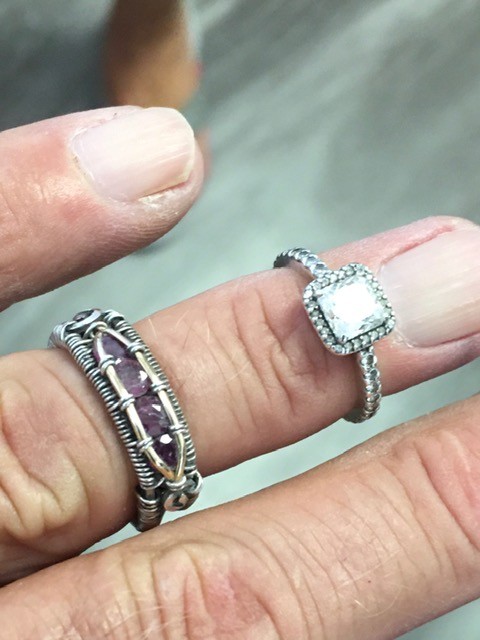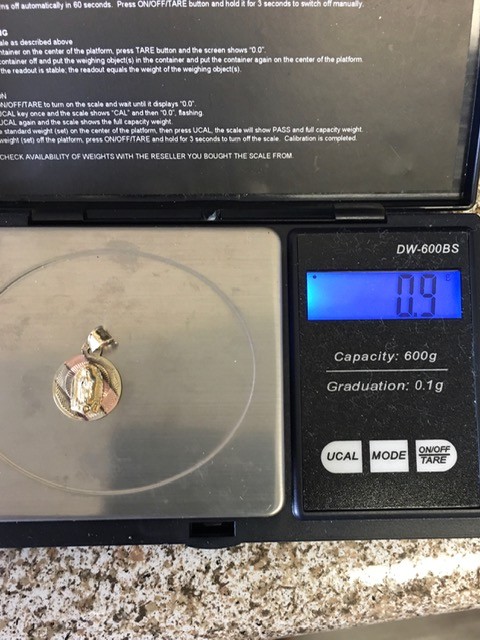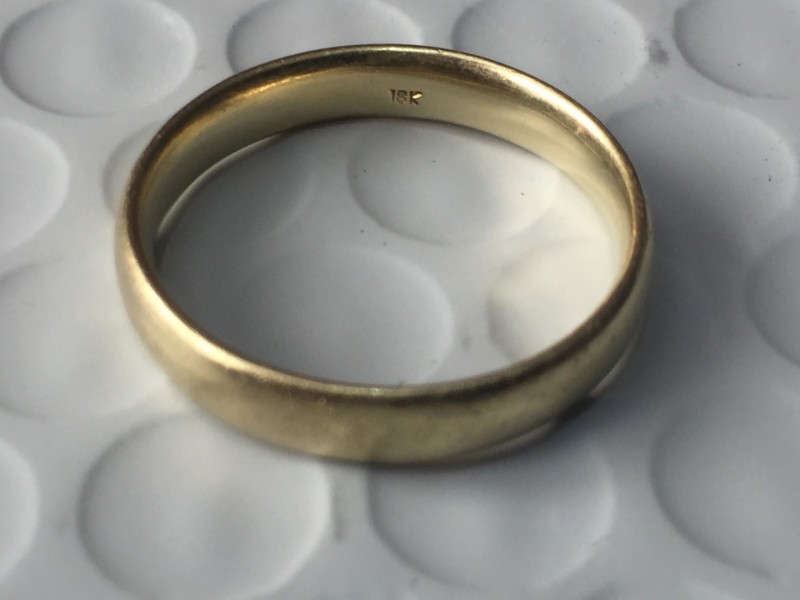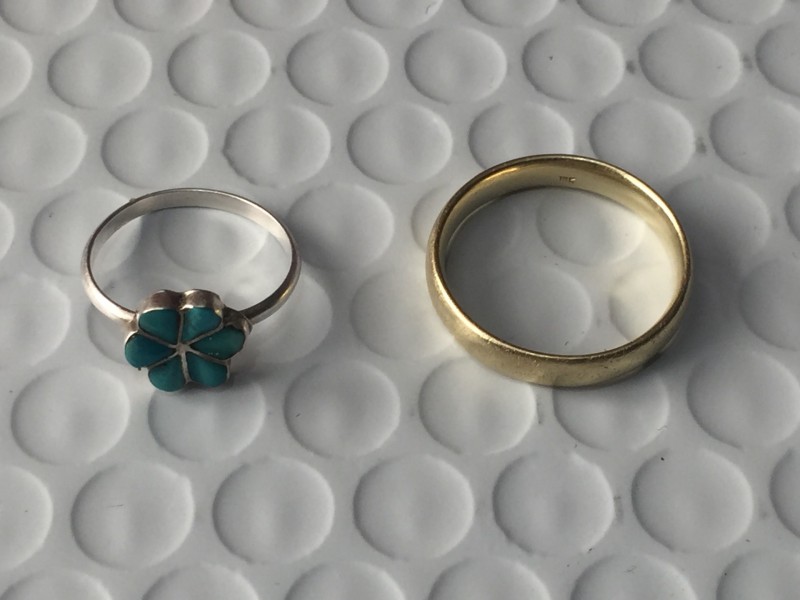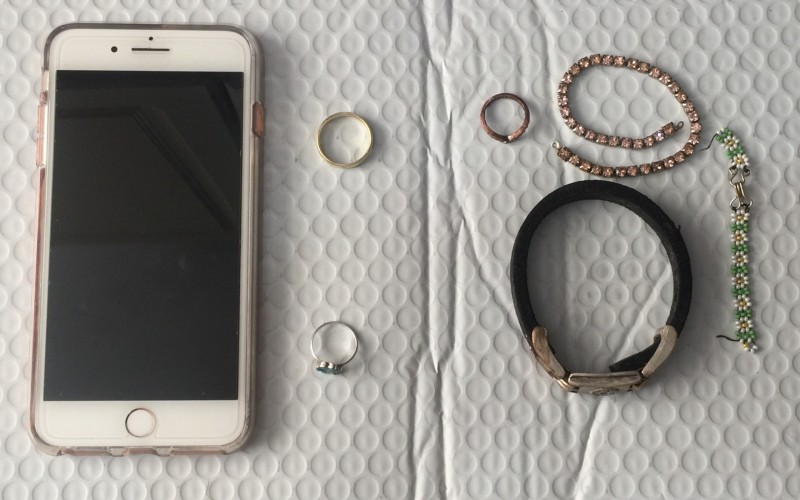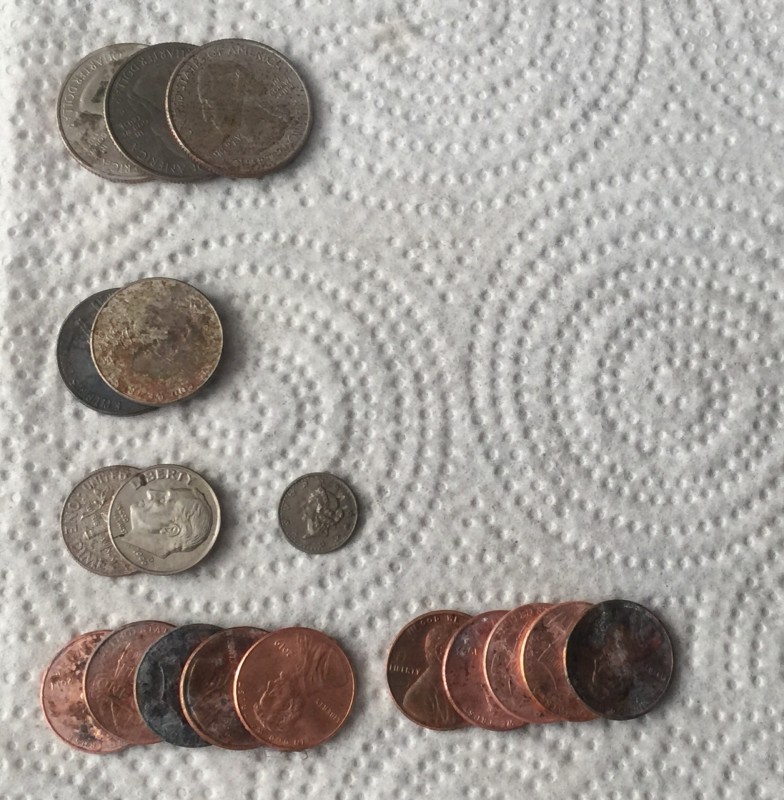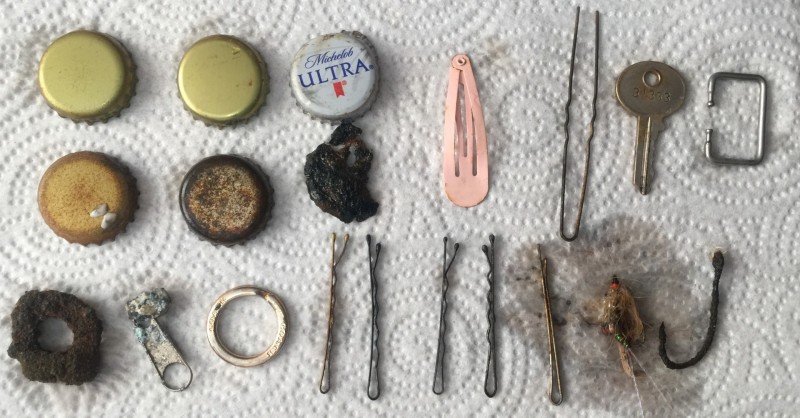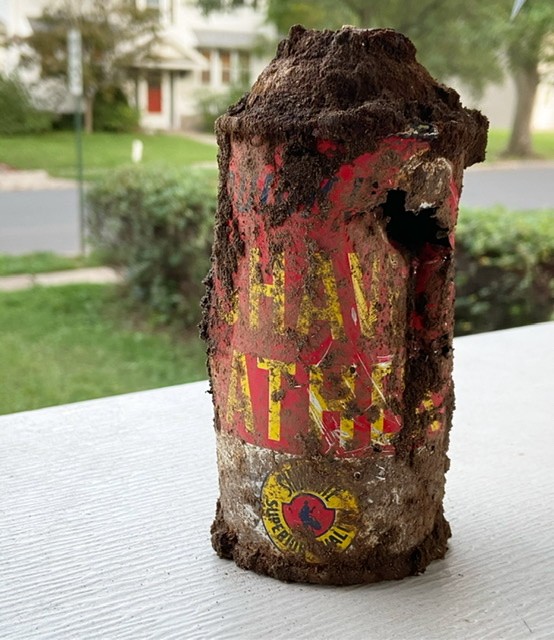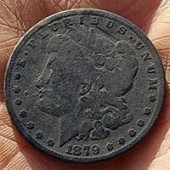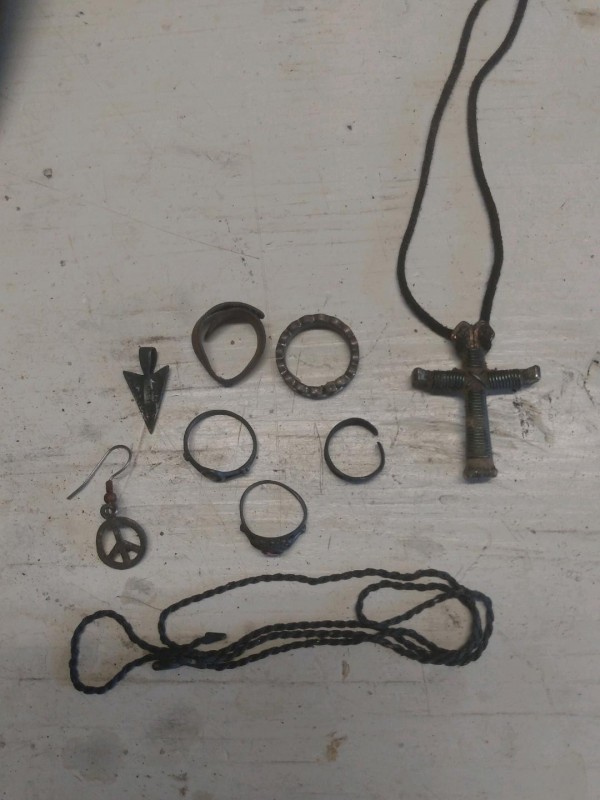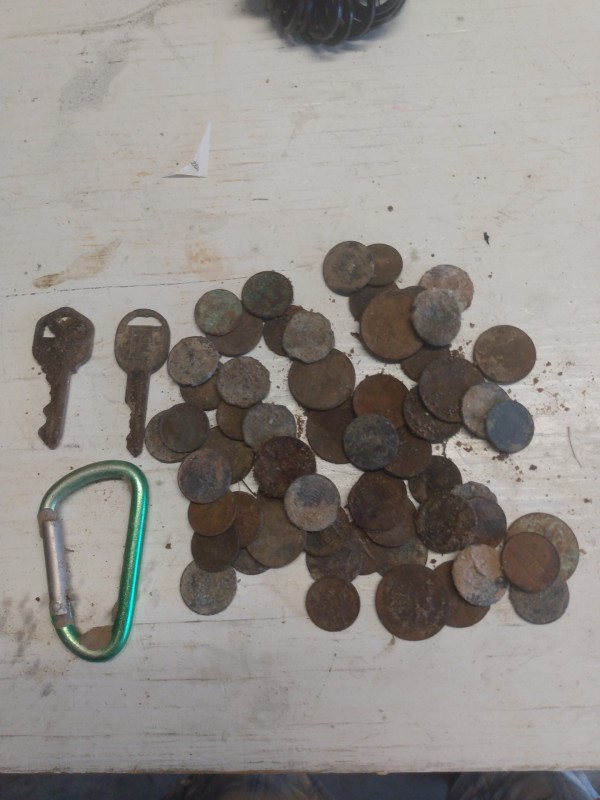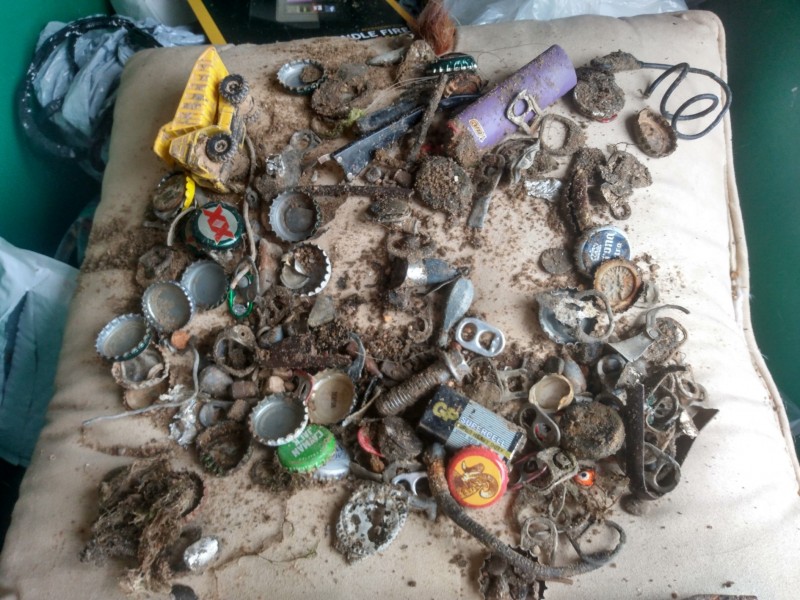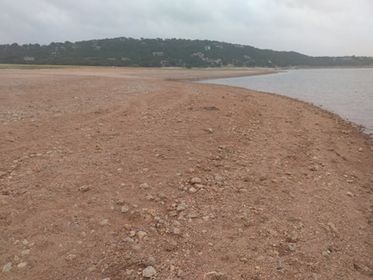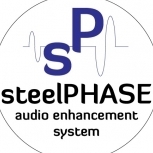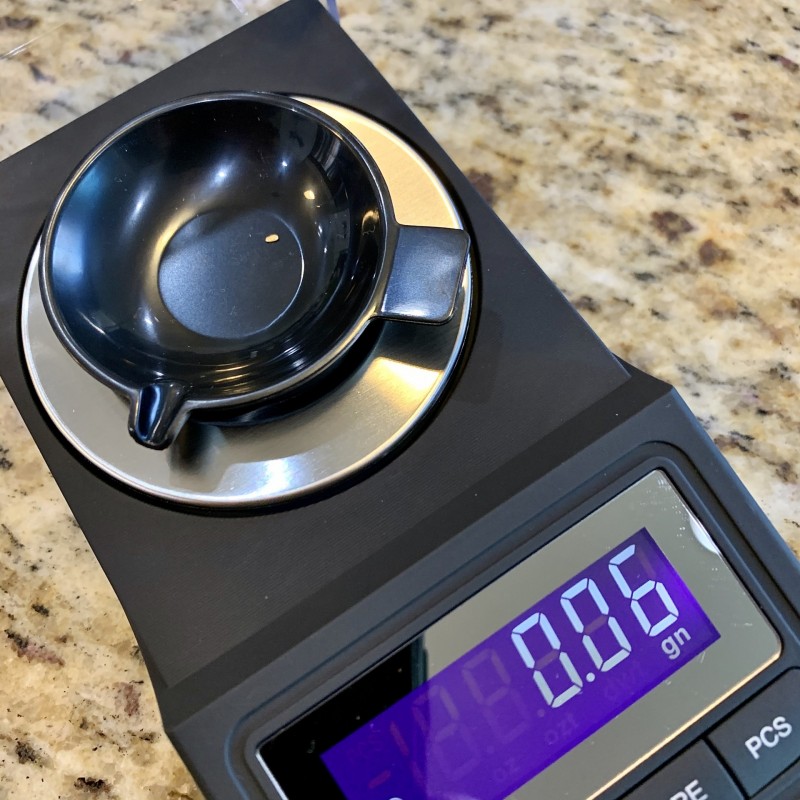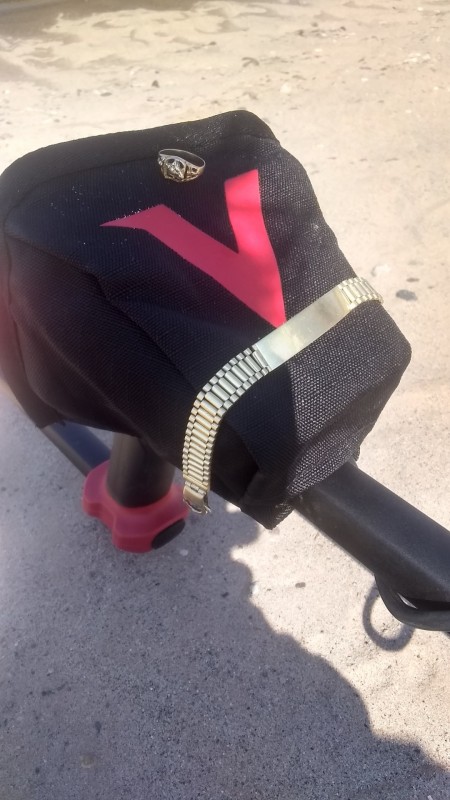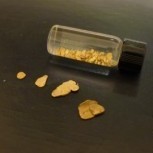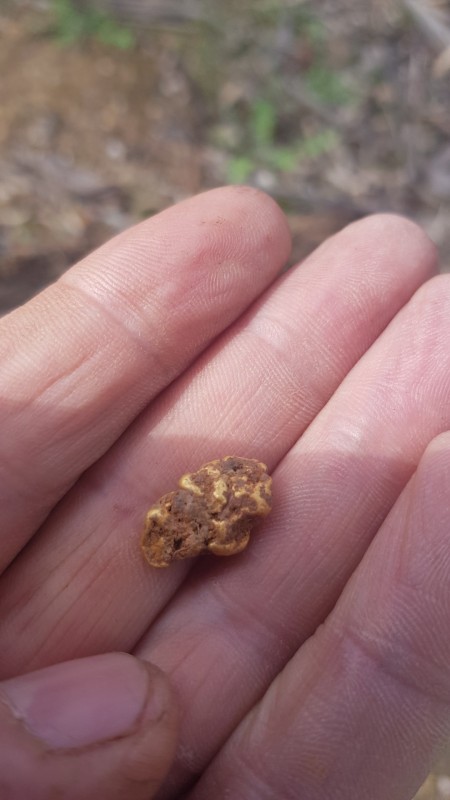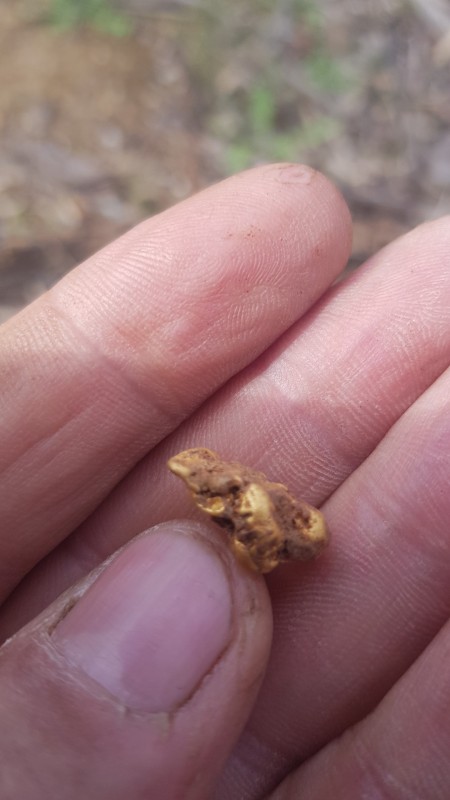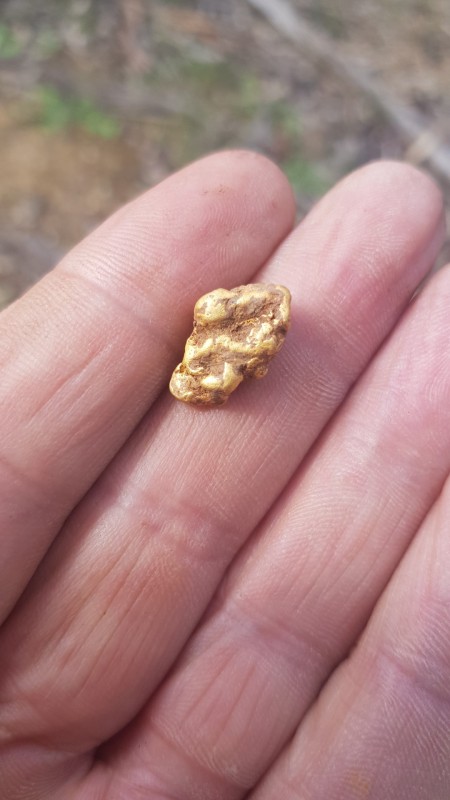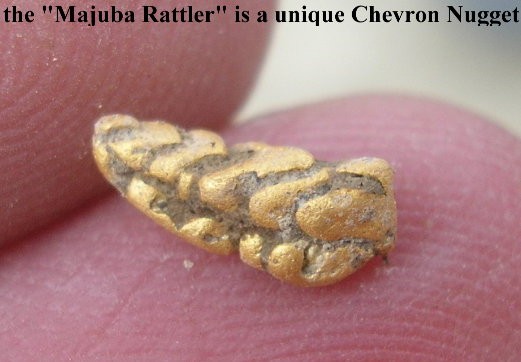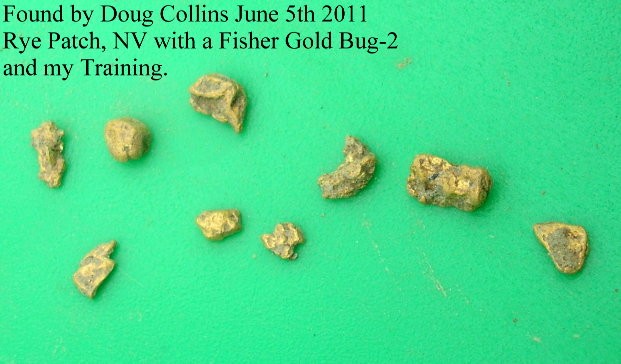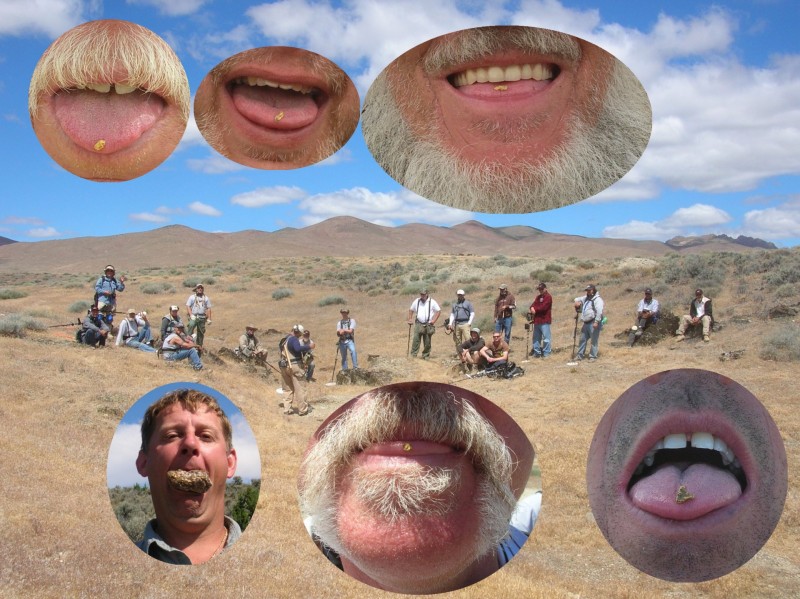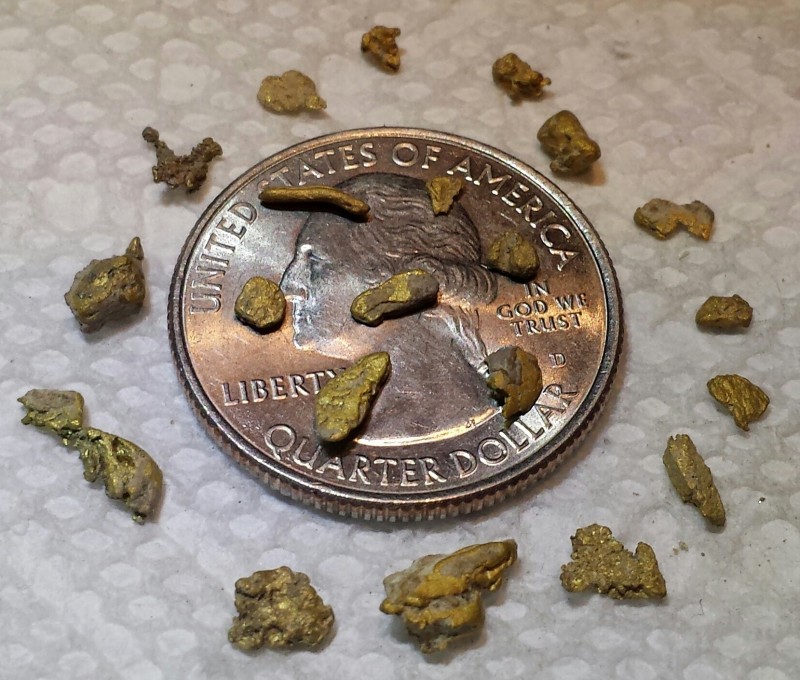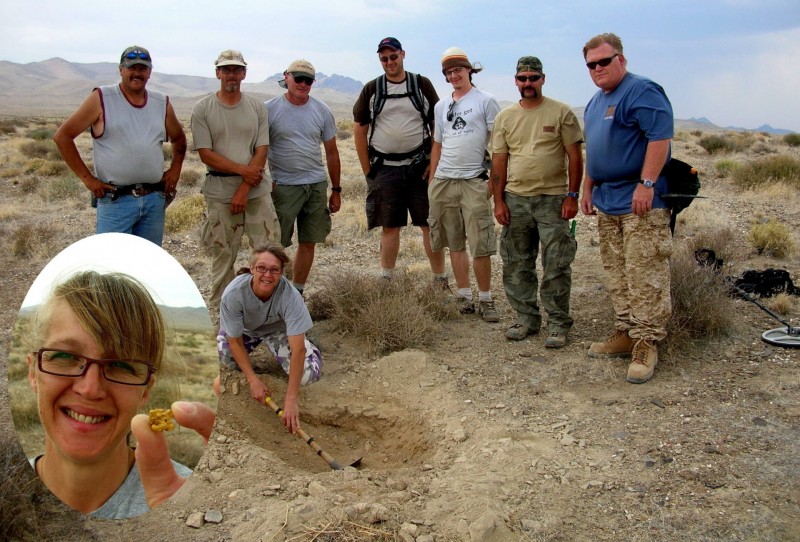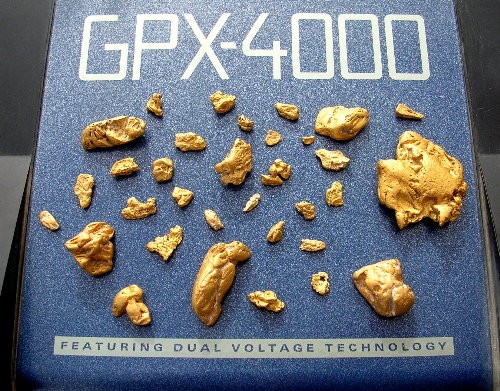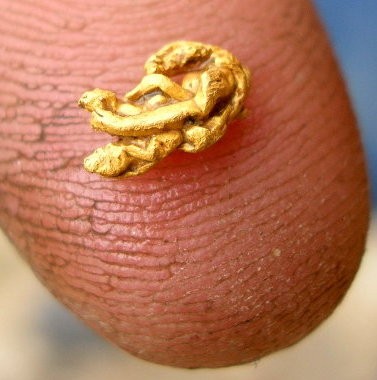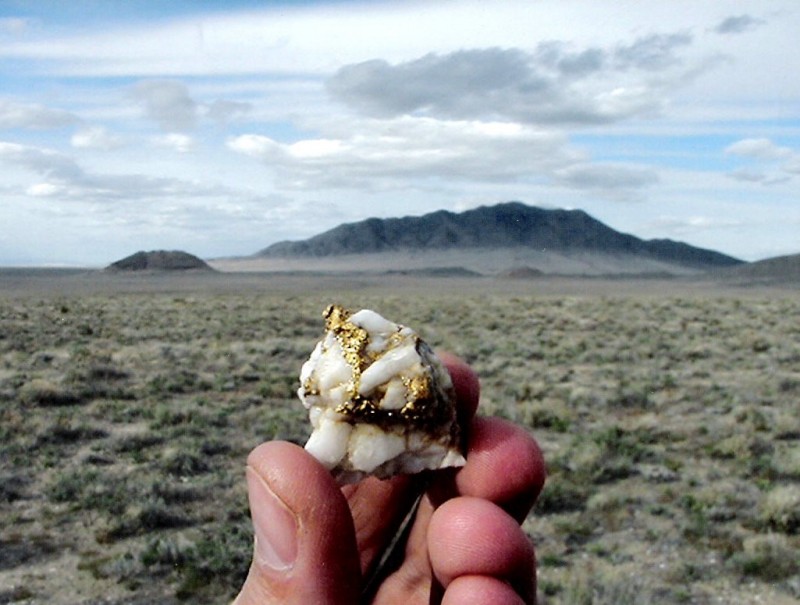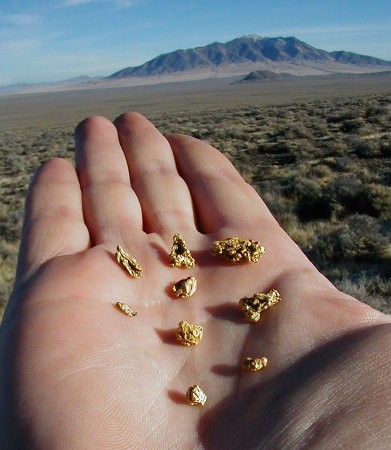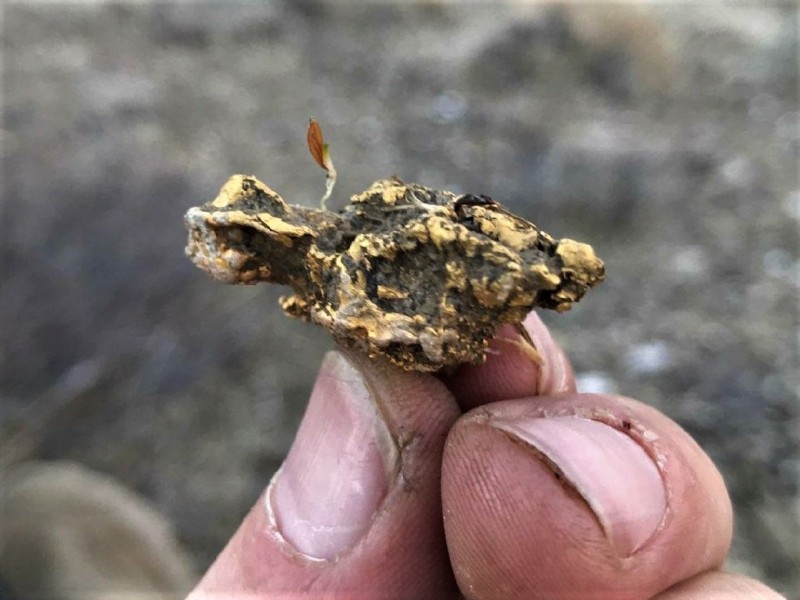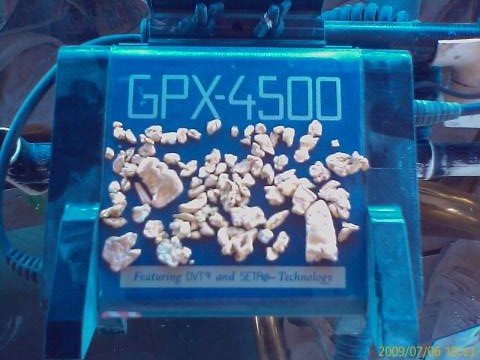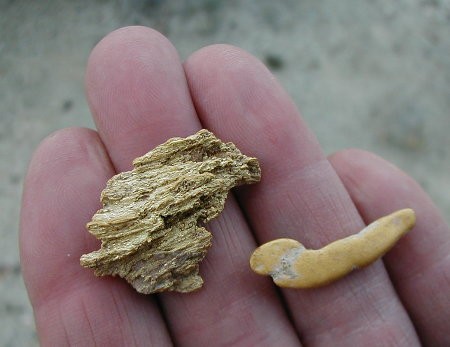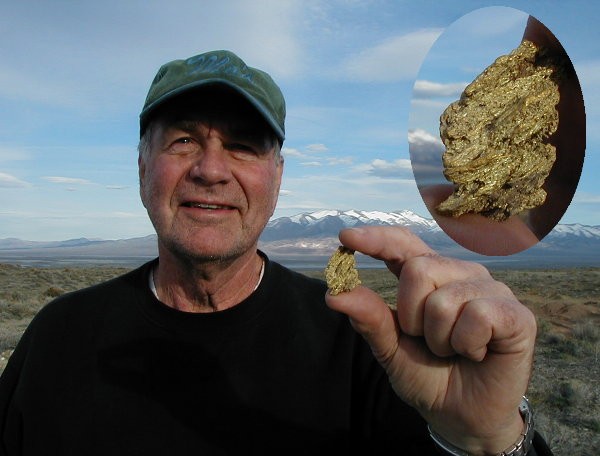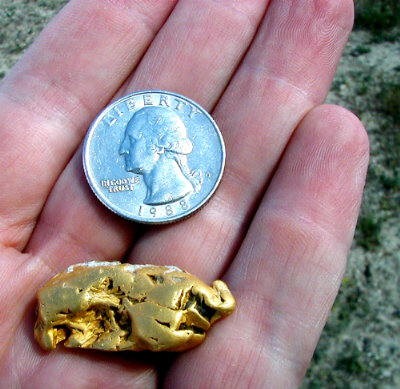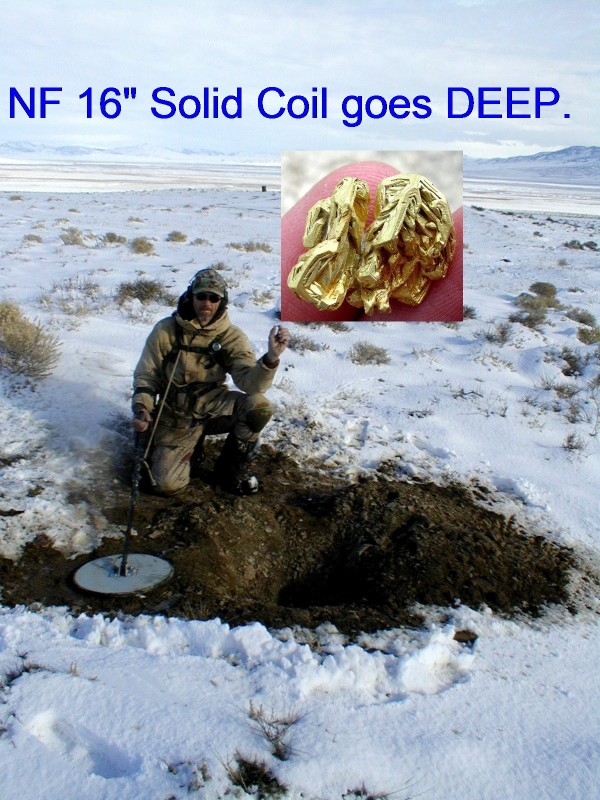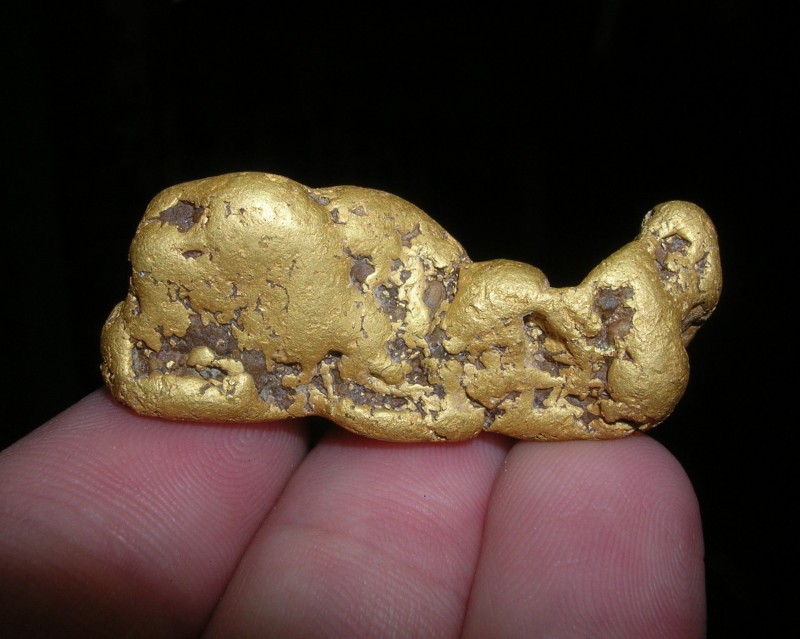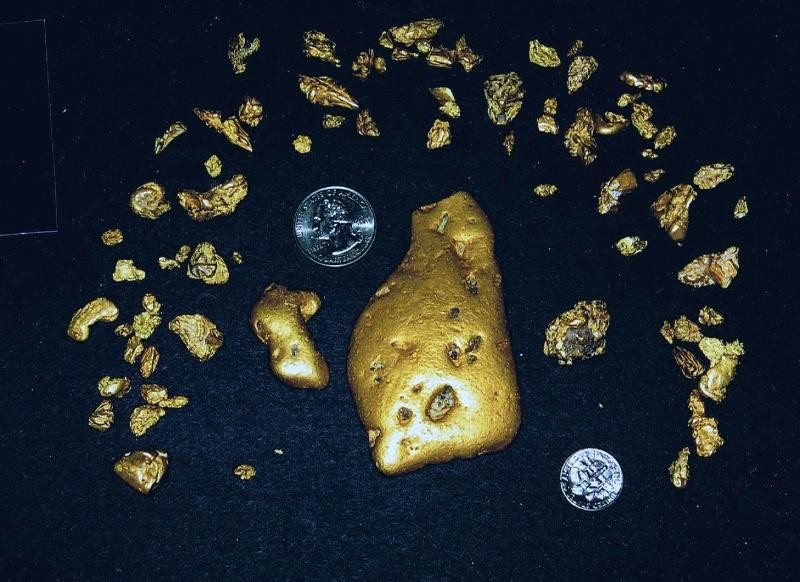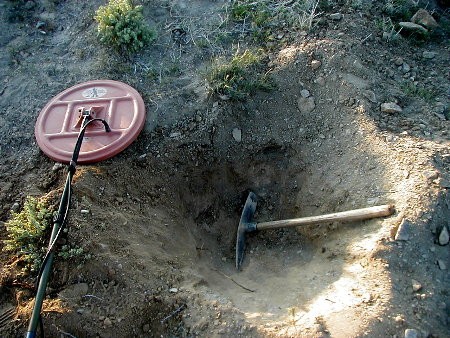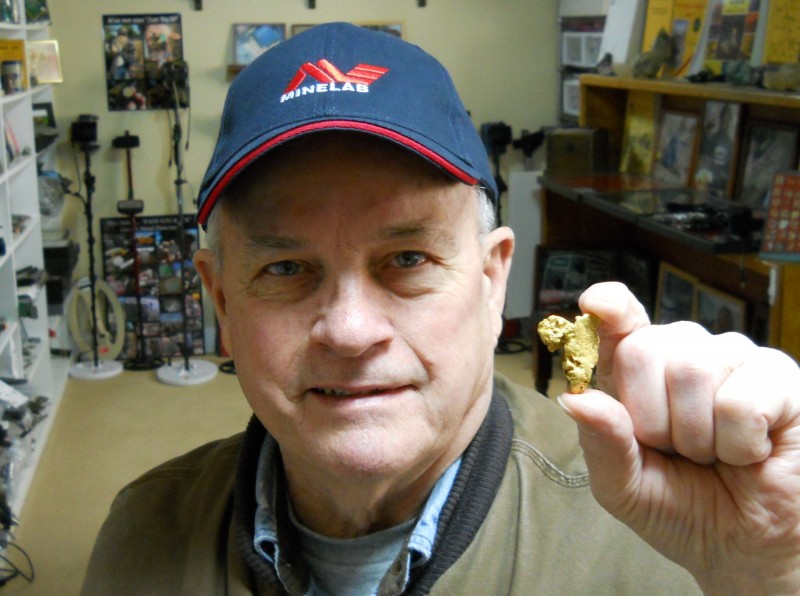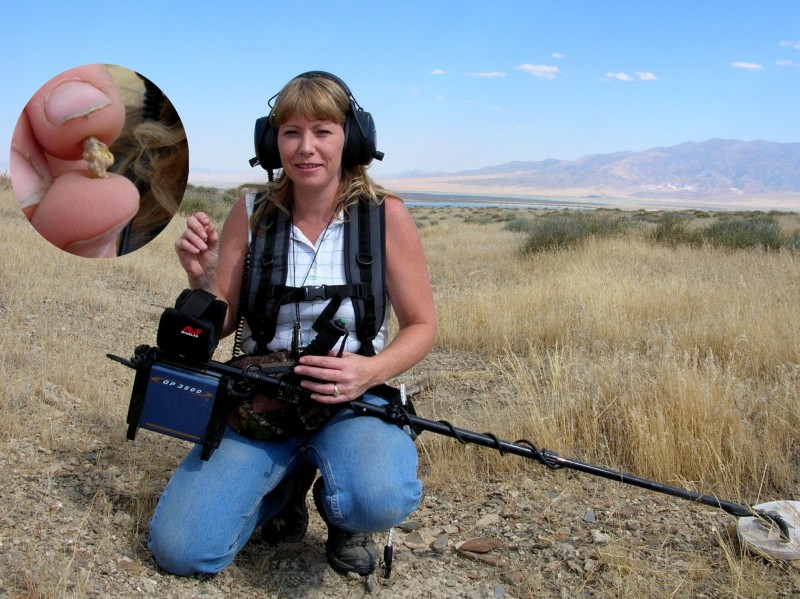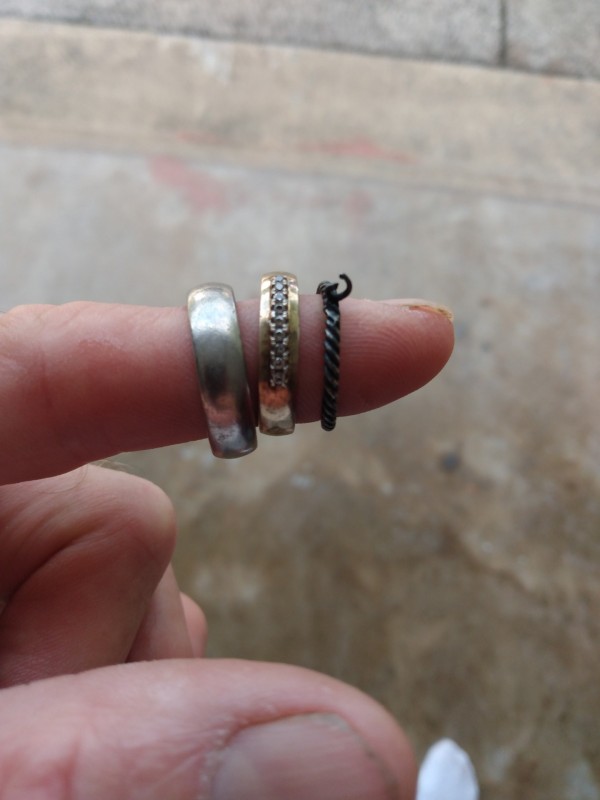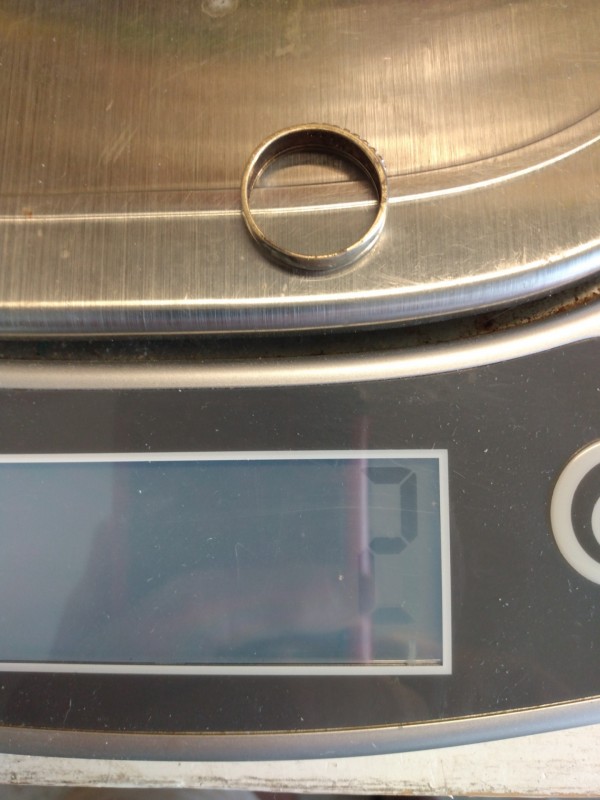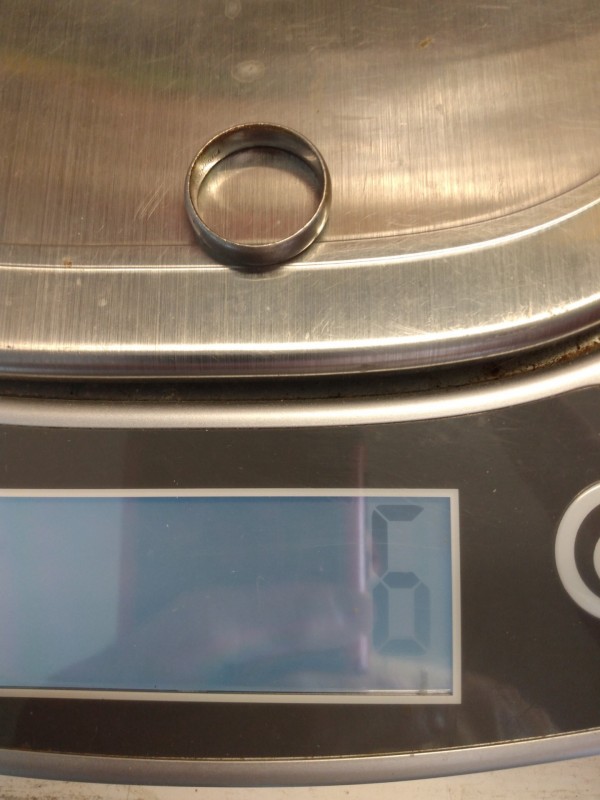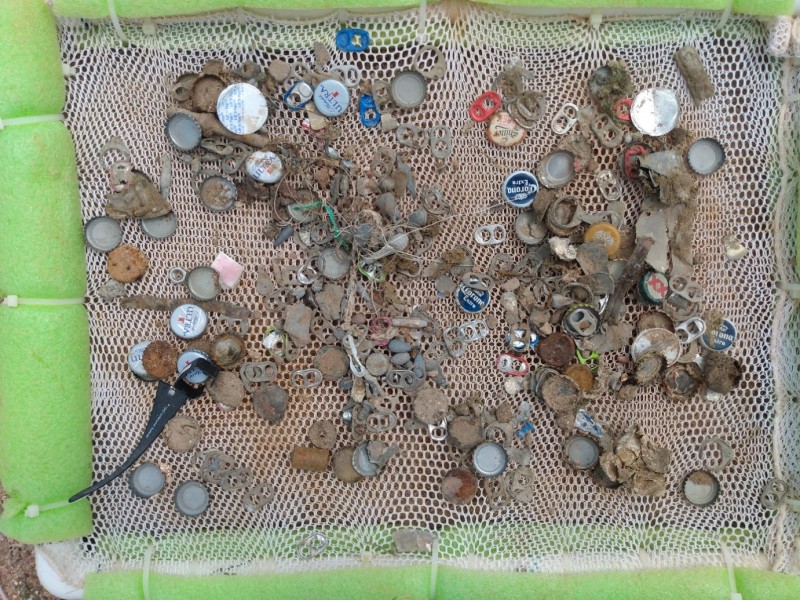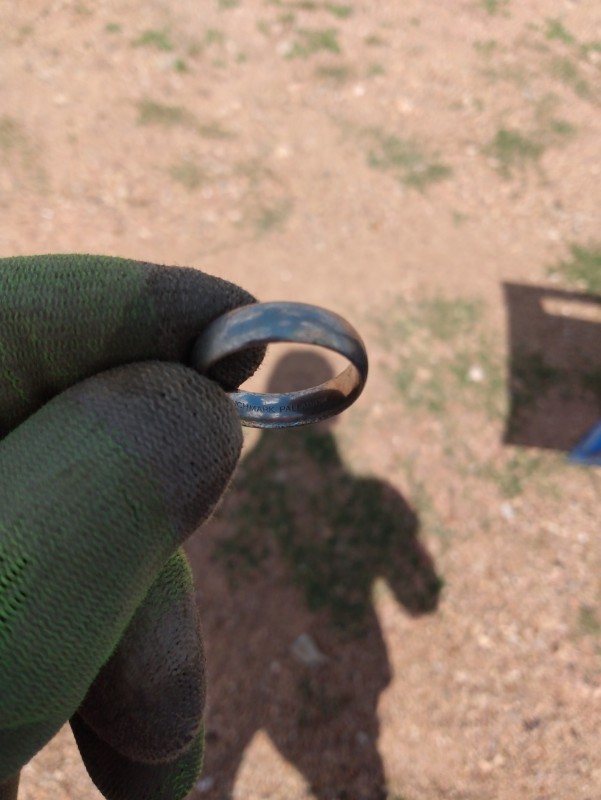Leaderboard
Popular Content
Showing content with the highest reputation on 09/06/2020 in all areas
-
Hi all. Been out there for a few years now picking up the bits that your lucky enough to walk over. The other day I was up early and on an area that I have been over before. Thought I will give it another go. Nothing found by me in the immediate area before. Tuned up the 7000, adjusted the harness for comfort and proceeded to swing the coil. 7.16 am exactly. Walked I think 11 steps and the machine went of its dial. Bloody piece of junk I thought but stopped and scraped the surface looking for a piece of steel, then I saw it. I take it that everyone has found their dream piece and remembers the thrill of the moment. The blood rushes, the veins expand, the hands shake, bad language starts and you hope your heart can take it. To me it was a monster, and now that urge to get back out in the scrub swinging the detector again is even worse. I then spent two days searching the area in a well planned 200 meter radius and found nothing. Not even a boot nail. How can this be possible? The saying that gold is where you find it seems true. Planning another trip as soon as possible, cheers sturt13 points
-
I thank all of you who have said nice things about my grandfather and only hope that I can fill his shoes for his last adventure on the Civil War hunt. He truly wanted to get that done and now it is on my shoulders to finish the hunt for him. Thank you all for your kind words, Caleb12 points
-
7 points
-
Caleb, You just enjoy the trip and the people as much as possible. What you 'find' will be in the total experience and not be measured by what comes out of the ground at the end of a detector coil. I'm sure at times you will feel 'directed' by things you remember your grandfather saying. That will always be with you. He wanted it that way. He'll be with you this hunt and others to follow. Share his thoughts and yours with others and your rewards will be greater. Mitchel5 points
-
Jeff and I had a couple PM messages back and forth about Iron Bias, and what it does. Jeff made mention he thought it took items with mixed ferrous and non-ferrous responses and reduced or eliminated the non-ferrous response, leaving only the ferrous response. I usually set Iron Bias to 0 unless I forget and leave it at some default setting. I hunt full tones and between high 39 spikes and audio "tells" while in full tones I generally do not have much issue with ferrous tricking me, and so it has not been anything I have investigated much. The bottom line is I was feeling vague on exactly how this control acts in practice. As we all know bottle caps with the normal FE settings had a habit of reading in the mid-teens near 13. I have also run into issues with large flakes of decomposed steel cans in old mining camps that read in the teens. I'm not worried too much about bottle caps, but in some old camps that rotted tin can debris can really mess an area up. Minelab introduced the new FE2 setting that allows for more range on the control. Jeff's message made me wonder - is Iron Bias reducing the non-ferrous false signals, or increasing the ferrous signal? This short video shows the problems and the solution, and answers this question. I start with a piece of tin steel that gives a non-ferrous reading around 15 in normal FE mode, and show that from FE0 to FE9 the target gives a clean mid-tone with no ferrous report of consequence. The old FE setting was ineffective on this stuff. Then I go to FE2 and show that increasing the setting rapidly shifts from a non-ferrous reading to a ferrous reading. At 0 it's clean non-ferrous. Just going up to 2 makes it a mixed ferrous and nonferrous reading, at 3 it's mostly ferrous with some high tone mixed in, and at higher settings it is a solid ferrous reading of -7. To me it looks simple. The control is variable, and a particular item can be adjusted to read solid non-ferrous, or to give mixed tones, or to read solid ferrous. It is not a matter of just decreasing the false signals. More like converting what were non-ferrous signals to ferrous signals in a continuous range. This all goes back to the ferrous versus non-ferrous range having a full overlap, and much like how you can use the tone break to decide what items near target id 0 read ferrous and which do not, the Iron Bias offers a secondary control that does the same with these problematic items. The part I do not show? There are good items that will do the same, and I need to try and find one. In theory there is a good item that will give a false ferrous if this setting is too high. Otherwise we would not need the control. Just set it to max and forget. So the real question here that I think remains is not about the ferrous. The control will clearly help with making ferrous items read ferrous. But what about the reverse? What non-ferrous items will be revealed by leaving this control at a low setting? I take it as a matter of faith these items exist and so I leave the control low at or near zero. But how common are they? Am I suffering needlessly? What are the risks of setting the control too high? Minimal risk, or high risk? The best way to find out may be to simply go detect, but take the time to double check items at the full FE2 setting of 9 to see how many might read ferrous when they are not. Be patient - it might take a minute for the video to start once you hit go. fe-v-fe2.mp4 If somebody could make a perfect ferrous/non-ferrous filter, then we would not need the control. Many casual detectorists don’t need it at all either. The reality is the setting is a trade off. Higher eliminates more ferrous, and also runs more risk of missing the desired non-ferrous. Conversely, lower settings reduce the risk of missing desired targets, but you dig more trash. So the question is pretty simple. Are you willing to let the engineer pick the best setting for you? Or would you like the ability to make that decision yourself? People hate digging trash, so I find presets to be too aggressive for me. I get very worried if I’m digging no ferrous at all. So I tend to set where I’m digging some, but not so much as to bother me. It gets me “iffy” finds others miss. This is a simplified example. Iron bias far right gets all gold, but you dig all the ferrous also. Far left eliminates all ferrous, but loses all gold. A typical factory setting as illustrated might eliminate most ferrous, but at what cost? It is interesting that the control is on,y available in multifrequency on the Equinox. The issue predates multifrequency, with variable bottle cap reject controls going back to analog detector days. It’s an issue inherent in the physics of the targets being detected. If anything this is a problem that was accentuated with the switch from concentric to DD coils. Concentric better separate flat ferrous targets than DD coils, so this was less an issue when concentric reigned supreme. The newest bottle caps are even worse also, being made of a much larger range of materials than the simple caps of old. It is not just bottle caps though, but decomposed flat roofing steel, old rusted can pieces, and more. Why ferrous items can read non-ferrous From Whites XLT manual (6.59 kHz single frequency): BOTTLECAP REJECT Adjusts how strongly the instrument rejects or breaks up on iron. Most starting programs use the minimum setting. As larger numbers are selected, more bias rejection against iron occurs. The advantage of higher BOTTLECAP REJECT settings is that in high-trash areas more decisive iron rejection occurs. Trash becomes easier to identify by the broken sounds they produce. The disadvantage of a high Bottlecap Rejection setting is if an iron target is close to a good metal, the high degree of bias against iron may cause the detector to cancel both responses. Another disadvantage is that all targets, iron and non-iron, tend to start sounding more broken at high levels of BOTTLECAP REJECT. The operator needs to fine tune BOTTLECAP REJECT according to their preferences and the conditions being searched. Note that according to White’s, setting this control too high can contribute to masking issues. It makes sense, as all we are doing is adjusting the tipping point on mixed target responses, and a ferrous target next to a non-ferrous target presents just that issue.4 points
-
Hi guys! Hope y'all doing great! So, today I went to the beach again for the third time! Managed to pull these 2 beauties! Today I didn't use no discrimination because I was getting bored! Haha. Although I was All Metal, I avoided most of the high IDs, I don't really look for coins (did pull a few tough), my gold is to dig the low IDs and the iffy signals. It was fun! If you have any questions, let me know! Best regards4 points
-
I have been out of the loop for a number of years and just joined back up. Here is my latest adventure. Aug 2020 Kind of a long read, Names and place shall remain anonymous. Got a call last week from a guy that wanted to know how to run a detector that he got from his dad. He was going to use it to help a friend find something that had been buried. I explained the machine to him and asked about size and depth of object and he didn't know for sure but said he would call back if he had more questions. About 4 hours later i get a call from same guy and he says his friends wife wants to talk to me. Wanted to know if I would drive over (about 65 miles) as they needed someone that knew what they were doing with a detector. I asked a few more questions about size and depth and was told about 30 inches deep & the size of a Carnation can, cardboard she thought. Having nothing else to do we decided to make the drive and see if I could help. Come to find out the guy had buried the can of coins about 10+ years ago and he and a couple of friends were trying to find it. He had suffered a couple of strokes and couldn't quite remember exactly where it was buried.. I asked of one thing and that was to take some pictures if we find it and no name's or location would be reveled. Pretty much about half of the space under the building had been dug to a depth of about 3 ft. We dug and I detected for about 1/2 hr and kept hitting some old rusty nails and from what he told me I asked them to remove a section of dirt and in the meantime I was going to check the big hole they dug earlier so the owner and I slipped thru the wall studs and began searching the other side, In the far back right corner I got a very very weak signal in the far corner and told him to move some gravel/dirt so I could check it again to see if it gets louder. It did so move some more gravel and it is louder and then it screams at me, I said we have a large target here and he starts moving dirt and gravel with his hands and a little piece of gray tape pokes thru and he yells we found it. More gravel come out revealing the whole lid and then the can. The can was heavy as it was full and I'm thinking he buried a bunch of silver and I said it would be nice to see some gold in that can. He said so you would like to see some gold would you. He and his wife were over whelmed to say the least that I had found it for them. He asked me how much he owed me and I said what ever you think, a little gas money. He handed me $2000.00. I said no way and he said you want more and I said that's way to much but he wouldn't take any back because you see I just dug up there retirement savings. Stuffed in that little can were 224 1oz gold coins ( All Buffalo and American Gold Eagle rounds). 10 tubes of 20 rounds each and 24 in clear cellophane wrap. At todays price well I guess you can figure that out.3 points
-
This is a very unique looking ring. Obviously it is hand made. Tightly wrapped silver wire with 14K gold wire securing the 4 amethyst stones. Not for everyone but it was for someone. LOL It rang up 23-25 on the Equinox. I am not sure what the core material is but it appears to be dark in color and has a piece on both sides. Anyway, just wanted to share this one. Pretty cool. Also dug a couple of 10K pendants and a really nice .925 ring with CZs all around it and a large center stone. Thanks for looking!3 points
-
Allen's great story of the commissioned search for that family's cache, reminded me of one I'll add here : There is a local dealer here, who has a rental model they rent out (an old 5000D series 1) . A person had rented it, but brought it back the next day having failed to find what they were looking for. They just didn't have the expertise, and were running into common junk where they were trying , etc.... They asked the dealer if he knew of any hobbyists, with more experience, that could help. The dealer referred them to me. I got the call , and asked what he was trying to find. He explained that about 10 yrs. earlier, he was going through a divorce and some hard times. He didn't want his coin collection to be subject to any split terms , so he had boxed it all up, put it into a plastic sealed tupperware tray. He took it to a buddy's house and explained that he needed to hide this "till the heat was off", and asked if he could bury it in his friend's yard. The friend agreed, and the two of them went to this guy's back yard (nearly an acre in size) and buried it. They made mental note of which bush it was near, and paced off the # of steps from a nearby fence, so that they'd have place-markers. Years and years went by. During that time, the homeowner did a lot of garden work in his back yard. Planting new shrubs, moving others, etc.... He also updated his fence. Finally, about 10 yrs. later, the friend came back to get the buried coins. But lo & behold, every bush seemed to look alike. And the fence post they had made mental note of, was no longer the same fence post arrangements. So the two men just started digging random holes in the area that they best recollected from that time 10 yrs. earlier when they'd buried it. To no avail. So they rented the detector. But were in for a rude awakening : The homeowner had installed gopher wire (like chicken-screen substance) around all the tomato plants and such. They got a few typical garbage signals from the yard (aluminum, etc...), but simply didn't know what they were doing. By this time, there were now holes all over the yard. I asked the guy how many coins, and what type he had buried. He described it as 50 or 70-ish gold coins, all together in a cigar-box sized tupperware container. And said he recalled that they buried it no-more than 2 ft. deep. My immediate thought was that this should be child's play. But after a few hours hunting with my standard detector, I was coming up empty handed ! Unbeknown to me, was that all the coins, even though in single container, were all individually in plastic sleeves. Ie.: not touching each other. Therefore, in the same fashion as a necklace, the detector will tend to see them as individual objects, not as a composite whole. The next day I came back, armed with a borrowed TM 808 2-box machine. After another hour or so, I finally got a weak beep. So weak that I almost figured it couldn't be the target (because I was still expecting a lunch-box sized signal). But this was it ! Once we got it out of the ground, and opened it to look at the coins, it was then that I realized why such an amount of coins, at only 2 ft. deep, was difficult : Because since they're not touching, it's not seen as one big signal. It's a more difficult signal, when they're not a continuous singular piece of metal. And the plastic container, of course, wasn't giving any signal. Wish I could say it had hundreds of gold coins like Allen's, but .... oh well 🙂3 points
-
Not exactly. You can notch out any vdi you don't want but you can only customize tones in up to 5 pre-defined bins (5 tone mode). 50 tone mode you can notch out any VDI but you can only affect the ferrous/non-ferrous tone break and the range of the tone pitches in the non-ferrous range and the difference in pitch between the ferrous bin and the bottom of the non-ferrous bin. It's all spelled out in the online manual on pp. 46-50 which you can download here. A good summary overview of tone options can be found here. Other Equinox essential information here. .3 points
-
Got out for another night hunt today, started at 3am and stopped about 7:30. I did a zig zag from the wet to the waters edge of the low tide and I couldn’t find a line to work no matter how much I tried. I decided to pick a line that has worked for me in the past and has kept me from getting skunked on a few occasions. This hunt was no different, my first crisp sounding target was a nice little 18k ring that weights 4.7 grams. This is my first 18k ring ever, for some reason I always find 10k gold when I do find gold. About 30 minutes later I found a dead/drowned watch. Towards the end of the hunt I found the iPhone, which I figured that’s what it was before digging it. It’s been months since I have found a phone and this one doesn’t turn on just like all the others. I was swinging the AQ for this hunt. It’s weird how sometimes it works like it should and others it likes to false, during the same hunt. Thanks for reading and happy hunting.3 points
-
I was informed by 2Valen's grandson, Caleb, that he passed away on Friday morning. Tim had only been a member on this forum since last summer but he had contributed significantly, particularly in his identification of recovered jewlery, tokens, and relics. His ability to determine both age and geographical/manufacture origin was amazing. (Edit: Caleb informed me that his grandfather was an antique wholesaler.) I actually met Tim in person last August when he was having trouble with his just acquired Minelab Equinox 800. We agreed to meet halfway at an Illinois small town park and compare notes. His wife and dog came along for the adventure. Fortunately I was able to give him a few pointers that eased his mind and he quickly became an Equinox advocate. You may recall his mention of a USA Civil War cache hunting expedition to Tennessee which he had been involved in. When he posted early this summer that he was offering up his spot on that in 2021 due to health issues I didn't realize how serious those apparently were. Tim also was a miner of placer gold in his home state of Illinois, as he mentioned here on more than one occasion. But now I find out from Caleb that Tim had told us only a small part of his treasure hunting experiences. He was involved in electronics with both the US Navy and Air Force. While working with the Navy he spent his free time over 10 years searching for 17th & 18th Century shipwrecks with equipment he built himself as well as other commercial unmanned flight and underwater detecting devices (e.g. sidescan sonar). He catapulted knowledge learned from his military experiences into underwater search and recovery of among other things, cannons which he still owned at the time of his death. I will most miss Tim's ID'ing ability and his willingness to happily share that with all of us here. We've lost a asset that will be impossible to replace. But his family has lost much more, and they have my sympathy.2 points
-
Spent a lot of time in East Idaho back in this shaft right in the middle of good gold country. shaft goes back some 200 feet with a short drift here and there. Huge seams of quarts all thru this place. Don't know if the old timers found anything in here as I sure didn't. Did get one hit in the wall using GB2with 6" coil (no quartz)and tried to chisel it out with a small 2lb hammer and east wing rock chisel but no go. Nothing outside in the tailing pile other than blasting caps. They had to be chasing something. Is a real nice area with good gold 70 ft away in creek bed.2 points
-
Hi Just joined and just got my first real metal detector today. I just got a Garrett Ace Apex and am excited to see what I can uncover with it. Looking for tips and tricks and any other helpful info. David2 points
-
Yesterday i wanted to see how the HF coil staked up against the x35 coil in my test garden , I wanted to see how it did on high conductors . 8" dime 7" dime, 6" dime, 7" pull tab, and a 7" cut nail pointed at a 45 degree angle to make it false good . I used the ,Deep program, 7 disc, 2 reaction speed, silencer 1, 93 gain, bumped up the audio volume to 6, and to my amazment it hit all targets good and this at 50KHz I also have to 3" cut nails laying flat at 5" the one has a nickle 1" under it , and the other just the nail . so at the factory pre set of 5.5disc i was getting a high tone on the cut nail and i adjusted up the disc untill it went to a low sound , that was 7 disc but when i went over the cut nail with the nickle under it i got a clear high tone unmasking the nickle , so i wanted to take it out to the 30,s tar paper shack and see what it could do with an earea i had cleared of brush and went over many times. it was not long i started hitting 22 short shell casings and slugs, and to my great amazment a 1930,s shot shell , could hardly think i had missed it , but it was the 50KHZ was just picking things out in the iron , very pleased with it , i did dig several iron targets one was a fence post nailand a round tarepaper washer, and two pices of flat iron and at least two nails , but the performance was very noticeable at how good it is at hunting in the iron and still getting reasonable depth2 points
-
The ORX not having a full tone option really cripples it in thick aluminum trash in my opinion. There just isn't enough variation in the mid tone on shallower low to mid conductors to really tell the difference and any low to mid conductor below 4" or so becomes a high conductor in tone and target ID. At least with full tones on the Deus, when the up averaging happens I can still hear a big variation in the tones on aluminum trash and some pull tabs along with a residual signal off the edges of the coil. I can't hear any of that with just 3 tones on the ORX or Deus in three tones. It isn't particularly easy with the Deus either, but it is much more possible to pick coins out of thick aluminum. It is much easier with the Equinox in 5 or 50 tones because there is some tonal variation with either tone setting and the target ID is so good. Your Equinox Roosevelt silver dime is a good example. Even deep clad dimes can have similar numerical target ID spreads. I have dug many at 8" or deeper that had a 6 digit spread. Same with copper pennies and quarters too. I often dig 8" or deeper US nickels that will read 11 to 14 or 15 at those depths but the tone is still a low/mid conductor toned target (nickel, lead, gold!!!!!) and lets me know accurately with a little investigating via the depth meter, iron tone check and onboard pinpointing that there is a deep coin sized mid conductor under the coil with no iron present. Got to dig those too and I don't recall ever being fooled by what the Nox is telling me on those type targets.2 points
-
Hi again! At the moment I will probably explore mine and my friends yards, as well as some of the local playgrounds in search of dropped coins and possibly jewelry. Once I get the hang of it perhaps look into getting permissions as well as possibly some beach hunting despite my hatred for sand. When the pandemic is over and it is safe to travel again I would love to be comfortable enough with the hobby to possibly hunt in Japan. I have bagged up a number of coin and jewelry samples to spread about and Bury in an attempt to learn to recognize different signals. Despite the divorce my wedding ring finally has found a use. My only find in my yard so far is this extremely valuable shaving lather can!2 points
-
Had a good hunt at the lake today, hunted for 6 hours and ended up with 5 pieces of silver, handful of clad and a pouch full of trash. 3 silver rings, silver pendant, silver chain and a couple of junk pieces of jewelry. Stayed on the dry beach today because the lake level is dropping. Ran the Nox 600 in Park 1... recovery 2... Iron bias 0 ...Sens 23 ..1 Tone, dug everything from 0 up.2 points
-
I've probably read this before (maybe even one of your posts) but at that time didn't pick up on this distinction -- that the XP Deus handles (thick) aluminum trash better than its sister, the ORX. Is that simply because of the better tone options that you mention above or is there something else going on? To answer bigtim's question, I like the combination of good separation and target ID at depth of the ML Equinox 800. Consistent with what Steve H. has said many times (but possibly in disagreement with some other Eqx users), in my soil as the coin depth increases the digital TID spreads out but for the most part doesn't shift higher or lower, at least not as much as other (actually single frequency) detectors I've used. A couple days ago I had a good (tone-wise in Park 1 MultiFreq, gain = 22, tones = 5 (custom breaks, volumes, and pitches), recovery speed = 5, Iron Bias F2 = 0) signal but the TID was varying 27-34, so the average/centroid ~30, and this was after pinpointing. That's a dig-it-all-day-long TID anyway. Turned out to be a 5-6" deep silver Roosevelt dime. That is a bit higher than what these air test (26-29 or so in my experience) but I suspect other detectors I've used would have put this way off (even grunting iron in some cases).2 points
-
Erik my photo was taken before I retired in 2003 maybe 1 to 3 years earlier. Check up the price of your shilling/half sovereign they do have a good value in fair condition (NB English coin) You might find this site .......LINK...... about cleaning coins of some help.2 points
-
Its only an anecdotal evidence but I know of a couple of people using them on the CTX over in Europe and they swear it helps. I have never tried it myself though but it will enhance the signal of any PI machine. On a IB or LF machine, it will generally just amplify the signal.2 points
-
OMG DWD, KAC, Seeker and all! I just bench tested the Park 2 mode on some gold chains and other small gold. I also toyed with single frequency (40 khz) and was surprised at how well the detector responded. I had a great hunt but may have missed a gold chain by using Beach 1 mode. Like I mentioned, I usually hunt in Gold 2 mode which hits the gold chains pretty deep but the chattiness almost gives me a headache. The Beach 1 mode will hit my test chain at about 2" but the Park 2 mode sees it at 4"-5". The single frequency 40 khz setting really smoothed out the tone too. I also practiced the Park 2 mode on some of the bottle caps I found. They still sound good and give a solid TID when the bottlecap is centered under the middle of the coil but the TIDs are more negative when the target is near the edge of the coil which is what I think you guys already know and are kind enough to share with me. Thanks again all! I can't wait to go back to this same spot and try out these new settings. GL&HH!2 points
-
One week later, the < 0.1 grain threshold has been breached with the runt of the batch using the GM1k. Initially, couldn’t tell if it was lead or gold because a white, dusty coating made it look like the rest of the tiny debris. I placed it on my tongue to clean it only to realize I couldn’t feel where it was in my mouth. After a moment of pondering my predicament, some forceful spitting and sputtering got it back into my scoop. I won’t be doing that for any nuggets of this size, again.2 points
-
Regardless of nail board scales and iron volume levels, the original comparative tests speak for themselves because the playing field was level for all the detectors shown. Also, I believe 3D tests and demos are more informative (but Monte's test board still provides a useful reference point). People are splitting hairs and arguing over shades of gray but you can't change the fact that Garrett knew what they were doing by placing it in the Ace Class. And it is apparent they have some work to do to improve recovery speed against their flagship competition. I appreciate abenson's tests for what they are: informative and unbiased. They are not designed to win pissing contests and arguments between small minded individuals with oversized egos. Get over it, fanboys. People need to stop getting offended by the technical reality about their toys and just go detecting. It is not a failure and it is not "the one" (no one detector is btw). It's a solid entry to low-mid range value detector that will make a lot of people happy with their choice...no more, no less.2 points
-
hi all i just got a Vanquish 440 & took it down to my favorite super trash infested freshwater beach well i have used the nox here so good time to test the Vanquish when i first started out it chattered a lot due to the blanket of nails & bottle caps & heavy minerals (but it wasent picking the bottle caps up 😃) thats a good thing well i hunted a bit & the only thing i could do to calm her down was lower the sensitivity to around half as there's not to many adjustments to work with . the nox has quite a bit more control as i hunted i got more used to the sounds & hit this beauty a id bracelet 29 grams of 14 k gold at about 4 inches read 17 🎧 happy happy i finished my run & went up to the car & got my much loved excalibur to see how i could do with it well it was in a constant null on the iron but did ok on targets. then i decided to try a less trashed area downstream the Vanquish ran much better & i was able to put the Vanquish sensitivity up to around 3/4 ran smooth i was hunting along & i got a mid tone & a locked 7 on the vdi (wouldn't let it go ) ah ha says i gold 😎 & sure enough down 7 inches i get a 10 k ring ive hunted these beaches many time & i guess i missed this 1 theres more to the Vanquish than meets the eye & it has the dna from the nox i think its gonna be my new friend i love the turn on & hunt operation im thinking its a winner thanks minelab the V is for Victory1 point
-
Hello all, So, i found myself in a very unusual position this past week of trading a detector, and buying a detector! I just want to preface this by saying, I'm not crazy (hopefully)!! Or on any mind altering substances of any kind!😂 I'm sure many of you saw Gerry of Gerrysdetectors.com looking to sell a brand new White's MXT Pro! Or trade for a used Nox 800! Well, i did the trade!😬 I'm sure there are those of you that think I'm crazy! (All comments and opinion's welcome)! Well, I'll try and answer that puzzle?! I've always liked the old school (not old) detector maker's that i grew up knowing! And I always wanted a Whites! And this was one i liked! I already had a few Bounty Hunters, and a Garrett! But due to my too long hiatus from detecting, never got around to the White's! I figured that they would still be around when i was ready! Well, we all know that story! So i was looking to add a new detector to my AT Pro, and Nox 800! Seemed easy enough, and i had been feeling out all the recent models! Than i saw Gerry's ad, and decided to take a different route! I offered to buy, or trade my 800 for the MXT Pro! He went with the trade, which I'm confident we will both be happy with!🤞 They are shipping past one another as we speak! I felt like i wasn't using the 800 to it's fullest extent! And i also knew that next year i would be selling it anyway, before the warranty ran out! So that was where my mind was at! And i knew the White's supply was drying up relatively fast; and i could always revisit a Nox at a later date! Than i saw The post about the Pinky Camo Technetics G2+!! I didn't think i would find a better price close to this, so Sold!! Another direction change! Again, I could have gotten a newer kid on the block, but again decided a tried and true alternative! That's my story for now! I welcome all comments and suggestions! Coil and accessory suggestions, etc... for both detectors! Tell me what you all think!! And if they were bad decisions, it's all Steve H's fault!! I found both of these on his forum!!😂🤣(kidding Steve)! Thanks all for your input! And to Gerry and Steve, for furthering my detector addiction! 👍👍1 point
-
One of the most controversial topics in metal detecting and coin collecting is that of cleaning coins. A lot of this comes from failure to define terms, such as purpose of cleaning and what ‘cleaning’ really means. I’m starting this thread as much to educate myself as anything. As such it is a bit of ‘brainstorming’. I’m not an expert although as is often the case, many of the people who claim to be such aren’t either. “Reader beware” has never been more true than in the 21st Century internet / social media world and this post is no exception. Numismatics is the fancy word for coin collecting, and the topic of coin cleaning must include facts and opinions coming from that segment of activity and knowledge. Here is a list of some of the concepts/issues/concerns expressed there: 1) A coin’s patina is important. ‘Patina’ is the natural toning that comes with age. This idea is shared with antique collecting, as is the concern over refurbishing/restoring/refinishing of antiques in general. It is almost universally accepted in numismatics that coins that haven’t been cleaned are vastly superior to coins that exhibit signs of having been cleaned. Whether or not you consider this reasonable, it’s locked in and not going to change. 2) Most of modern numismatics, and particularly the area with the largest investment, is in uncirculated coins. A lot of the information among numistmatists on coin cleaning relates to uncirculated coins. 3) Although “beauty is in the eye of the beholder” is a general cliche’, coins do change hands and many/most methods of cleaning cannot be reversed. Much of coin collecting (hell, much of the world in general) is about value and (permanent) cleaning has ruined a lot of coins’ values over history – thus the reason for major concern amongst numistmatists on this subject. What does ‘ruin’ mean? Reducing its value by 75-90% isn't uncommon. 4) Most collected coins did not spend years in the ground. The issues we detectorists experience are rarely even considered by coin collectors. 5) Often the word ‘cleaning’ among numistmatists is confused with ‘conservation’. The latter is loosely defined as removing foreign matter that in the long term will damage a coin. ‘Cleaning’ is simply trying to improve the appearance of a coin. Conservation is accepted, if done properly, of course. Even the two major grading services offer conservation options. 6) Statements such as the most common -- “never clean coins” -- or even the less dogmatic “cleaning should be left to professionals” may be well intentioned, but are neither informative nor practical. Who are these ‘professionals’? I suspect if you went to a coin show/convention and did a survey you would get very few answers to this question, but rather be referred back to #1 (“never clean coins!”). Although so far it may seem that numismatists are Chicken Littles, there is a lot of validity to their concerns. It’s just that you need to go past the cliche’s to understand that. Let’s start with an analogy many of us are familiar with – cleaning eyeglasses. What’s the best way to do that? (“Never clean eyeglasses” isn’t an option!) Fortunately micro-fiber cloth is a fairly modern convenience, and that (with a mild cleaning solution) is the proper method. But how many of us have used paper towels, cotton cloths (such as handkerchiefs or shirt-tails), etc. to accomplish the task? I have, and the results are eye-opening (no pun intended). Permanent scratches result, at least for modern plastic lenses (and that includes polycarbonate lenses). Abrasives are a common cleaning medium. Sandpaper is a good example. Would you clean your eyeglasses with sandpaper? Well, fibers in paper and cloth are also abrasives. That also applies to cleaning of coins. The naked eye may not notice fine scratches but coin grading involves magnification and then the scratches look like river valleys. (OK, I exaggerate.) What seem like minor differences in coin grades can translate to huge differences in value. Scratches are one of the things that determine coin grades. A very common occurrence in metal detecting, if YouTube videos are any indication, is the immediate rubbing of a coin when retrieved from the ground. The sand grains, etc., in the attached soil are abrasives! If you want to identify a recovered coin in the field, then take along a small spray bottle and blast the coin with water. (BTW, I’m aware that some perceived experts have claimed that water damages a freshly retrieved coin. While always holding out the possibility that my logic is wrong, ask yourself this question: how many years has this coin been in the ground, free from contact with water?!!!! Even the driest desert gets rainfall occasionally.) The reality is that many coins coming from the ground, especially those which contain mostly copper, are not attractive and sometimes not even identifiable without aggressive cleaning. If you’ve read this far, hoping to get some good answers, you are going to be disappointed. I don’t have them, yet. There have been a few threads on detectorprospector.com with discussion of cleaning methods. I’m not going to repeat those, nor even link to them since they are scattered. What I am going to do this year (new year’s resolution) is to both read more deeply and experiment with cleaning methods. I already own one book on the subject and just ordered two more from Amazon. My workshop is being upgraded to, among other things, make it more conducive to simple chemical experimentation. I’ll report back with my findings. In the meantime, here's an interesting discussion among coin collectors on the subject. Also, a well chronicled experience with one of the coin certification services regarding coin cleaning/conservation.1 point
-
1 point
-
Hey there GB, good to hear from you. As for your question of : "Would I have spent as much time if I'd known the challenges", the answer is the same any of us would give : We hunt for the love of the challenge. Just like a golfer's hole-in-one : The more difficult it is, THE MORE WE LOVE THE TASK ! haha Naturally , NO ONE likes it when they don't find that cache or make the hole-in-one. So if you ask the golfer: " Do you wish you'd never played the game ? ", is a mixed rigged type question. And actually, even if I'd known the limitations (that, since the coins weren't touching, that they didn't present the "cigar box sized signal" I had in mind), I still would have tried. Because although they don't represent a singular mass signal, yet, like a coin-spill, they *still* have a bigger signal than a singular coin at 2 ft. As much as I wouldn't have wanted to come away defeated, I love any excuse to get out and hunt. As do we all 🙂 The TM-808 doesn't get lunch box sized items any deeper than standard detectors, IMHO. BUT THE BENEFIT is this : It simply doesn't see small pesky items. Like singular coins, aluminum shrapnel, gopher wire, etc..... It only sees bigger objects. Approx soda can or index card sized, etc.... and bigger. About the absolute smallest it can see, is a silver dollar sized object. And only if the TM 808 is very finely tuned, and the silver dollar is held "just right". But realistically: soda can sized and larger. So it therefore becomes the perfect discriminator to pass smaller stuff. And you're not left to be endlessly "second guessing" all the smaller signals . Which give you nagging doubts that they might be bigger stuff that's simply deep, thus giving a small signal. With a standard machine, you end up digging a bunch of those "just to make sure". But with the TM-808, you effortlessly pass all that stuff. Other than that, the depth is surprisingly not that different. As fr the depth of the gopher wire: I don't recall. Seems that it was underground, unseen. But just in the vicinity of the rootballs around various individual plants . It was actually easy to discern even with the standard machine. And then merely a matter of trying to discern the signal strength (since that's a weak iron signal) versus anything else trying to "bleed through". But still a nuisance, as you can imagine.1 point
-
R.I.P. Valen My condolences go out to your family and friends, Your thoughtful comments will be missed by many on this forum. Norm1 point
-
It seems that many here knew my grandfather, and I only hope that I can gain the same respect that he had from man of you. I am new at this so please forgive me if I make a few mistakes along the way. I love fishing, hunting, and most of all family. I have my grandfathers equipment to learn and use and I have a lot to learn about this type of hunting. I went with my grandfather to several countries searching for lost treasures underwater, but never anything like this. I have used sonar, side scan sonar, and my grandfathers underwater detectors with UAV's. Caleb1 point
-
Hello Pete, Welcome to the forum! No! There is no difference in the two cables! They supply two, so you have a backup, and so you can charge two parts at the same time! Call Minelab service if you continue to have issues! They will help you! Service is very good!! Good Luck!!👍👍1 point
-
Very glad to have you here on this forum. I always enjoyed your grandfather's posts and the private messages that we exchanged. Lots of Equinox users on here who are happy to share info and to learn from you too. Jeff1 point
-
Well if you hunt a salt beach with this machine it will easily give you a 1 hitter.( Hit on 1 gold target that costs more then this machine at retail jewelry prices).The Vanquish will do that too. It will be very easy to pay for this machine with the price of gold at it's current level.1 point
-
I use the HF elliptical coil on my Deus and between 30khz and the highest khz setting i find its absolutely amazing on small silver cut halves and also small roman,works great on trashy sites as well.The 14khz works fine for general use but if i suspect a very early site with cut halves and cut 1/4 then the higher than 30khz just works a treat. The HF coil basically stays on my Deus almost all the time,although i carry the Nox with me as a backup machine its rarely used these days,i mainly use the Hot settings although it does fry my brain some what after a full days use,the XY screen is also very good. Possibly not the deepest setup going but as most finds here are in the top 8'' or so then i find i dont usually miss anything,if i suspect anything deeper on say pasture then the Nox or Nexus becomes the main weapon of choice.1 point
-
Oh, I missed that. I'm taking an Australian language class and we haven't quite gotten to the advanced part yet. 1887 silver coin is still a nice find, but obviously gold is preferable. Keep after the goal!1 point
-
1 point
-
I think it is if you are shopping a Garrett specifically, or a made in the U.S. detector at least. Garrett Ace 400 = $339 Garrett Ace Apex = $424 Garrett AT Pro = $552 That’s a pretty big jump from $339 to $552 and Garrett needed something to fill the gap. Looked at from within Garrett World, it all makes perfect sense.1 point
-
I rarely have seen any metal detector company besides Nokta Makro respond so quickly to some adverse but unbiased field testing. There is a lot that is really good about the internet, YouTube and especially this fair forum. Nobody is butt hurt except Garrett and some customers with high expectations who already bought their APEX or it is in the mail. It really is a perfectly good entry level detector. Is it worth between $400 and $500............???????1 point
-
Possibly a Nox with the 6'' coil and collapsible shaft which folds down ultra small enough for a backpack.1 point
-
1 point
-
Hey Guys, I can't tell you how many of the Goldscreamer Power Pack systems we have sold over the years. There are two kits available, one for the Minelab SD or GP series (4 pin) or the Minelab GPX series (5 pin). The normal price is $469.00 with free shipping, or $510 with free shipping if you want the "Slimline external speaker" included. This unit is worth every penny in my opinion. It's super lightweight, mounts right to the side of your detector with a control box cover and pouch included and also has the Signal Enhancer/Booster build into it. You also get a nice dual charger and two batteries. One of the best overall investments available for the Minelab SD, GP or GPX series. Rob1 point
-
1 point
-
Dredge tailing piles are full of crap, can, barbed wire, nails, hot rocks etc. Was hunting in Idaho, After digging countless targets you think another iron chunk, but I dig everything regardless of sound. This one come in rather loud and was setting a flat rock about 5" deep. Biggest nugget I have found. Weighed 5.56 ounce. Found a few years back and traded for a S&S 91/2' pickup camper, Now that nugget is worth a whole lot more and the camper has ;lost 3/4 of it's value. Oh well life goes on.1 point
-
Nevada has always been one of my most enjoyable treasure states to visit. Part of why I wanted to make this post (and why I'd like to see others give their input) , is to help guide some of the newer gold prospectors that has joined on with the rise in Au prices around $2000 an ounce. A little history about Nevada and I. I first started detecting Nevada for natural gold in the mid 90's with a local guy from Boise who goes by the name of Largo. He's had some health issues the last few years and not been to RP but promised I'd try to get him down there one more time this Fall. Some of the Gold Experts at the time, I was able to cross paths with and learn a bit or two (if they slipped the tongue- were usually pretty quiet) are names like Smokey Baird, Dog Water, T-Bone, Duffey, Jim Malone, Jim Straight, Gordon Zahara, 7 Up Jerry, Chuck Graff, Digger Bob, Jim Williams and of course Ed Spears...and probably a half dozen other names I can't think of at this moment. If any of you old timers on DP know where some of these folks are, I'd sure like an update. Yes I realize a good part of them have pasted to more golden patches, but I think some are still around and talking the stories of old. These were the guys you needed to watch, listen and listen even more. You paid attention to what they drove and where they traveled. You'd better be at the T & A (for many yrs I thought it was tits & ass) truck stop in Imlay, early in morning to sit a booth down and listen to their stories of the recent hunts and or finds. Eventually after quite some time of seeing the same dusty faces, they might give you time of day. Some of the others never hung there much (guess the T & A wasn't that good), but you might spot the dust cloud of their rig heading to a new patch. Many a times, I would run into 1 or 2 of them out Sawtooth or Jungo way, and they would occasionally toss a bone of knowledge my way. After all I was still pretty new to Nevada and learning the gold detector ropes. Heck in fact, I was still on the VLF band wagon and since I was finding gold every day, thought I was hot shit. Little did I know at the time, those high dollar Minelab PI's were the real deal. My 1st Minelab Gold was with a borrowed SD-2100 (the green one) and it took me about 3 days straight of hunting before I flipped my 1st gold. It was at that depth and time I realized their true power. I've been tethered to one almost ever since. Yes I go back to the VLF's on occasion (actually more than most would think), but I have earned many yrs of detector knowledge and skills, so knowing when to grab the VLF speedster is a must. Still plenty of gold to be found in Northern Nevada, but you need to do your homework. After all, it's not easy to find and that's why some of us on DP who post/comment, we know how hard it is and rewarding at the same time. So here's some help to the newer generation of gold hunters who wants to work hard, walk plenty and do research. I don't have it in stock right now, so it's not about me making a sale... Get this book. Placer Deposits of Nevada by Maureen Johnson. Study the recorded gold recoveries and realize some of the smaller sites will not get the attention they deserve. Lack or water in NV was one of the reasons those sites were so short lived. Google Earth - Using the computer on Google Earth and look for old mining areas, ore dumps and even recent years scrapes. These tip offs will almost always provided a few missed pieces of gold. What I like about G.E. is the ability to see on the other sides of mountains, hills and or areas that I could never get my truck. Elevation - Most of the placer nuggets seem to be in the same elevation zone within a few hundred feet anyway. If you are a follower on DP, then you recently seen this info was spoken and posted. Do your do diligence and read. Indicators - Learn the terminology of Desert Asphalt, Dry Wash Piles, Pushes, Scraps, Iron Cubes and some other terms others might add to this post. Detector Knowledge - Know your detector and then some. Au is around $2000 an ounce. If you have not found gold with it or are going home skunked more than you go home with gold, it might be of wisdom to take some genuine in the field training. Yes it will cost you money, but your learning curve and chances of golden dreams of Success are drastically improved. Location - Go and hunt were gold has been found before. DO NOT try to be the 1st at finding gold in a region, mountain drainage that has never produced and or doesn't show any signs. Just because you were hiking a mountain ridge while chasing Chucker and seen a quarts blowout. Once you have become proficient at finding gold and building up your patience, then you might do an occasional "prospecting" trip. Best advice is stay in the areas that has already produced. Todays never detectors and their technologies still finds a few the old machines missed. Patience - If you can't handle detecting for hours with no gold, please stick to coin/relic hunting as their rewards are much easier and faster. As I mentioned earlier in the post, those of us who have passed the patience test are the same ones who get that tickle in the tummy, giggle of the grin and joy of doing what so many can't, finding a piece of gold with the detector. Prepared - Know your body and its limitations. No metal boots is a MUST if you swing a powerful PI, ZED or bigger coil on a VLF. Rare Earth Super Magnet on the end of a good quality pick. Super Bungee, Harness, Swing Arm, Hip Stick are all designed to allow for more comfort that allows for longer/easier time in the field swinging a detector. Non Metal Plastic Nugget Cup or Trowel to help speed up the recovery of targets. Common Courtesy - Pack out your trash and even some of those who don't. Never toss a dug up piece of trash back on the ground, please put it in your pouch. Fill your holes as the ranches cows and those of us who hunts nights hate stepping in a hole. Respect Private Property and or Claims. Wildlife - Northern Nevada has an abundance of wild horses and some burros, deer elk, mountain lions, bears, big horn sheep and plenty of moo cows. A variety of reptiles, some poisonous and most not, even a few tortoise, tarantulas. As I get older more mature and wise, I learn to appreciate each of the species I might be fortunate to cross paths with and now let them all live. Yes on occasion a rattlesnake in camp might need to be exterminated, but for the most part, this is their land and they are not trying to hurt us. Now for some pics (I do hope others who have had success will take the time to share their pics) of Nevada gold. HooverRover.bmp1 point
-
That a a nice one! But that camper kept you warmer than that piece of gold would have🤩1 point
-
Clay, Your 'save' of this site deserves a thread of its own. Bill and Linda's is a classic just like an old treasure map. It is a good research site. Thank you and I hope your save increases the exposure of My Land Matters and causes others with historic content on their sites to save it before they dump it. A few years back many of my early prospecting and beach reports were dumped. Content is king. Look at Google. They save it all. Mitchel1 point
-
I said my goodbyes to my friend, Tim a few weeks ago and regret that we never had the chance to meet personally to detect. He was just a kind, generous, and knowledgeable friend and detectorist willing to help anyone who asked for it here on this forum. Amazed by his knowledge of artifacts and regret that he was not be able to complete his dream of finding that long lost treasure in Tennessee. Safe home my friend and good luck to his grandson Caleb and the other forum member friends of his who will be carrying on with the expedition in his memory. My thoughts and prayers are with his family and grief they are experiencing at this time. My sincerest condolences.1 point
-
Took the Nox down to my local lake for an all day hunt on the exposed beach area. The lake level has been dropping all summer due to the lack of rain in central Texas. I spent most of the morning digging nothing but trash, mainly pulltabs and bottle caps. First good hit was the palladium ring, VDI was 15. Next keeper was the little silver rope pendant, VDI was 24. Last find of the day was the 10K ring which hit at 12. This is my first palladium ring, I thought it was stainless when I first saw it, but when I picked it up, it had some weight so I figured it was white gold. I was pleasantly surprised to see it was mark "Benchmark Palladium"1 point
-
1 point

.thumb.jpg.95344db3aeef0a4c6c73420daa366191.jpg)


